Finger drumming is a super popular way for producers like yourself to bring their beats to life in real-time.
It can add a human touch to your rhythms and help you really fine-tune the feel of your track using only your hands.
Whether you’re jamming live or adding energy to your studio sessions, finger drumming is a skill that can set you apart as a producer in a major way.
Learning to enhance your finger drumming skills can seriously up your creativity and let you produce beats that sound more natural and dynamic.
That’s why we’re breaking down everything you need to know about finger drumming, including:
- Getting started with finger drumming ✓
- Choosing the right MIDI controller ✓
- Setting up an efficient drum pad layout ✓
- Adjusting pad sensitivity for better performance ✓
- Developing hand coordination and independence ✓
- Mastering finger placement for speed and accuracy ✓
- Using drum rudiments to build complex rhythms ✓
- Applying MIDI effects to enhance your playing ✓
- Advanced finger drumming techniques ✓
- Practicing efficient methods to improve your skills ✓
- Much more to help you learn finger drumming ✓
By the end of this article, you’ll be able to finger drum like a true professional.
It’ll give you more control over your beats and help you create different rhythms that are full of life and groove so you can start your finger drumming journey.
Plus, you’ll be able to make beats that are tight, expressive, and always in time.
So, let’s dive in…
Table of Contents
- What is Finger Drumming?
- 8 Finger Drumming Techniques You Need to Know
- 1. Essential Hand Coordination and Independence Exercises
- Pro Tip
- 2. Finger Placement for Maximizing Speed and Accuracy
- 3. Using Drum Rudiments to Build Complex Rhythms
- 4. Using MIDI Effects: Note Repeat, Velocity Curves, Etc.
- 5. Using Visual Cues: Color-Coding Pads for Better Performance
- 6. Mastering Syncopation and Off-Beat Rhythms
- 7. Multi-Layered Drum Kits: Stacking Sounds for Killer Beats
- Pro Tip
- Bonus: Practicing Finger Drumming
- Finger Drumming: Final Thoughts
What is Finger Drumming?
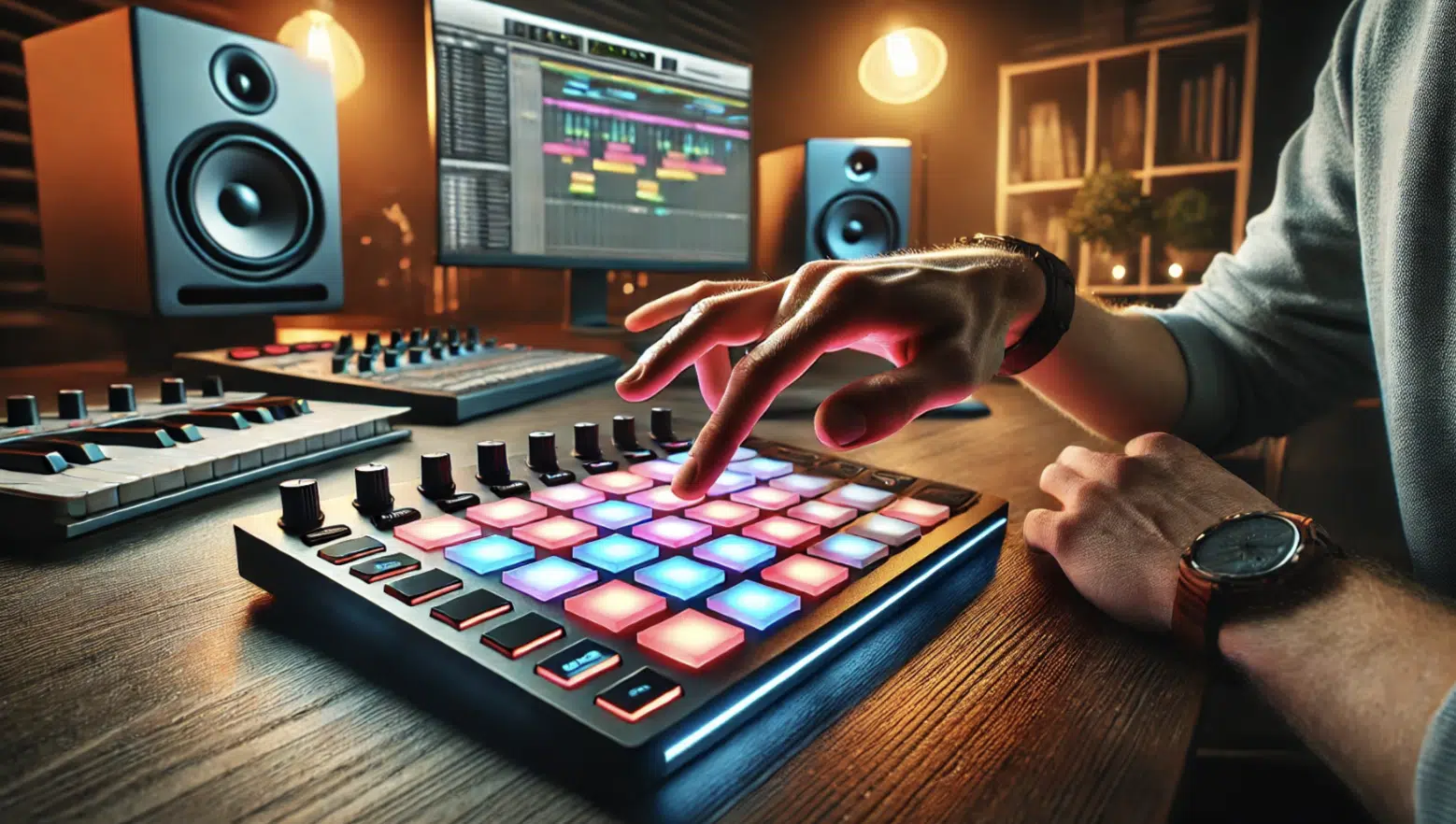
Finger drumming is a powerful technique you can use to create live drum beats by tapping out different rhythms on a pad controller.
Rather than relying on pre-sequenced loops, you can create everything yourself in real-time for dynamic, expressive control over your drums.
This is everything in genres like hip-hop and electronic music, but it can add a real edge to any style/vibe you can think of (if done correctly).
For example, you can use a pad controller to lay down a heavy kick and tight snare pattern, then layer quick hi-hat rolls for extra groove.
It’ll give your beat a more organic, human feel 一 helping it sound professional.
Some producers, like AraabMuzik, have made their names through intricate finger drumming performances, using devices like the Akai MPC.
If you want to make better beats, mastering this skill will bring a natural flow to your music production, allowing you to easily trigger complex sounds on the fly.
We’ll be breaking down the best finger drumming techniques in the game, especially for beginners, so let’s get into it.
8 Finger Drumming Techniques You Need to Know
When you’re getting started with finger drumming, the following finger drumming techniques will help you play with speed, precision, and creativity. So, let’s break down these super helpful finger drumming techniques that will elevate your finger drumming skills.
1. Essential Hand Coordination and Independence Exercises
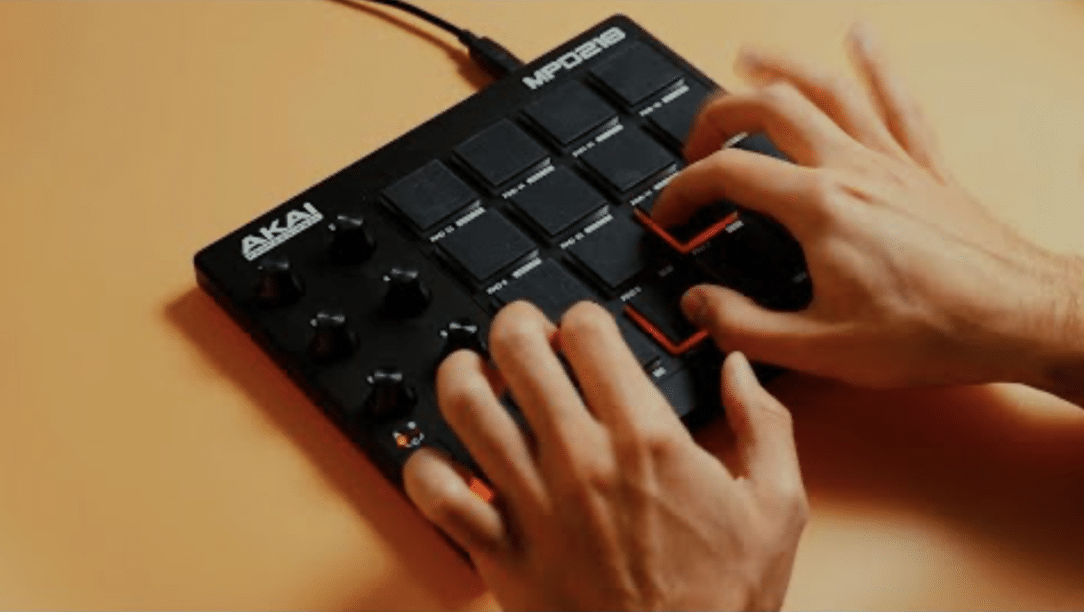
Building hand independence is key when it comes to mastering finger drumming so you can trigger sounds like a boss.
You can start by practicing a simple alternating pattern 一 using your right hand for the kick drum and your left for the snare (alternating hands).
Gradually introduce the hi-hat on your non-dominant hand while maintaining a steady kick-snare pattern with your other.
For example, practice a basic hip-hop groove where your right hand consistently hits the kick, while your left alternates between the snare and hi-hat.
This exercise will strengthen your hand independence so you can layer more complex rhythms and freely improvise during live drumming performances or when creating beats in the studio.
Pro Tip
Start incorporating a metronome set at a slower tempo, then progressively speed up your exercises by 5 BPM increments.
This forces you to focus on timing and smooth transitions (very beneficial).
Another helpful trick is to practice “mirroring” — playing the exact pattern with both hands to ensure equal strength and independence.
2. Finger Placement for Maximizing Speed and Accuracy
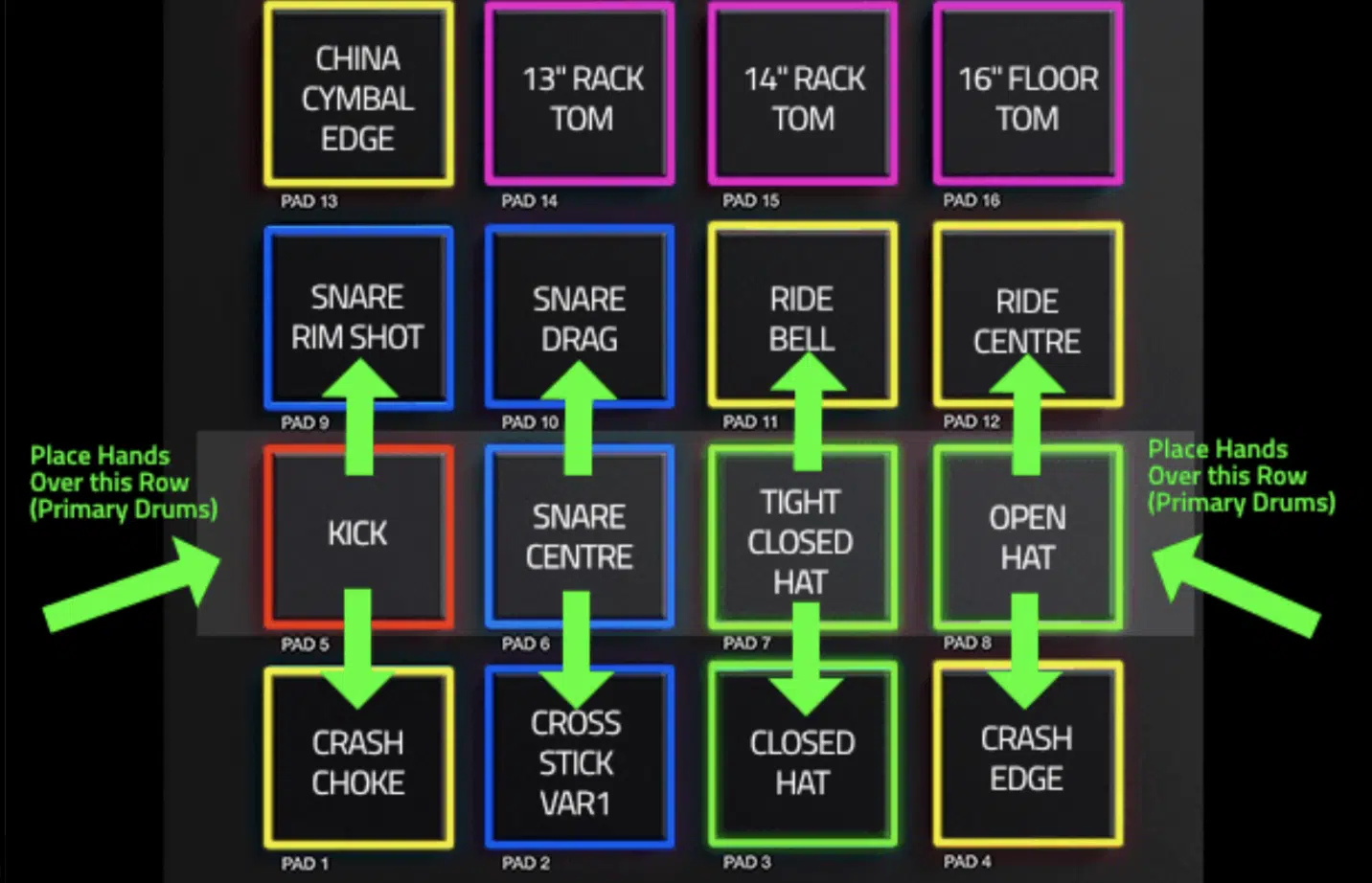
Correct finger placement is key to playing faster, more accurate basic drum patterns, so you’re going to want to position your fingers above the pads with a relaxed posture.
Make sure to keep your wrists slightly elevated.
For fast patterns like rapid-fire hi-hats or double-tap snares, place your thumb on the kick and index finger on the snare.
This allows for quick transitions without your one hand needing to cover too much ground.
For example, in hip-hop beats, having your fingers correctly positioned can drastically improve your timing/groove and make it easier to switch between the:
- Kick
- Snare
- Hi-hats
As you practice, you’ll develop faster reflexes so you can finger drum with more finesse and deliver intricate patterns with ease.
This means you can easily lock into the beat 一 maintaining tight rhythm even when you introduce fast or syncopated elements.
To increase your finger speed, focus on minimizing finger movement…
Keep your fingertips just above the drum pads and use slight finger taps instead of heavy, exaggerated motions.
Practicing rudiments like the “finger tap” and “finger lift” techniques (where you quickly alternate taps with different parts of your fingers) will help you master fast transitions between kick, snare, and hi-hat.
3. Using Drum Rudiments to Build Complex Rhythms
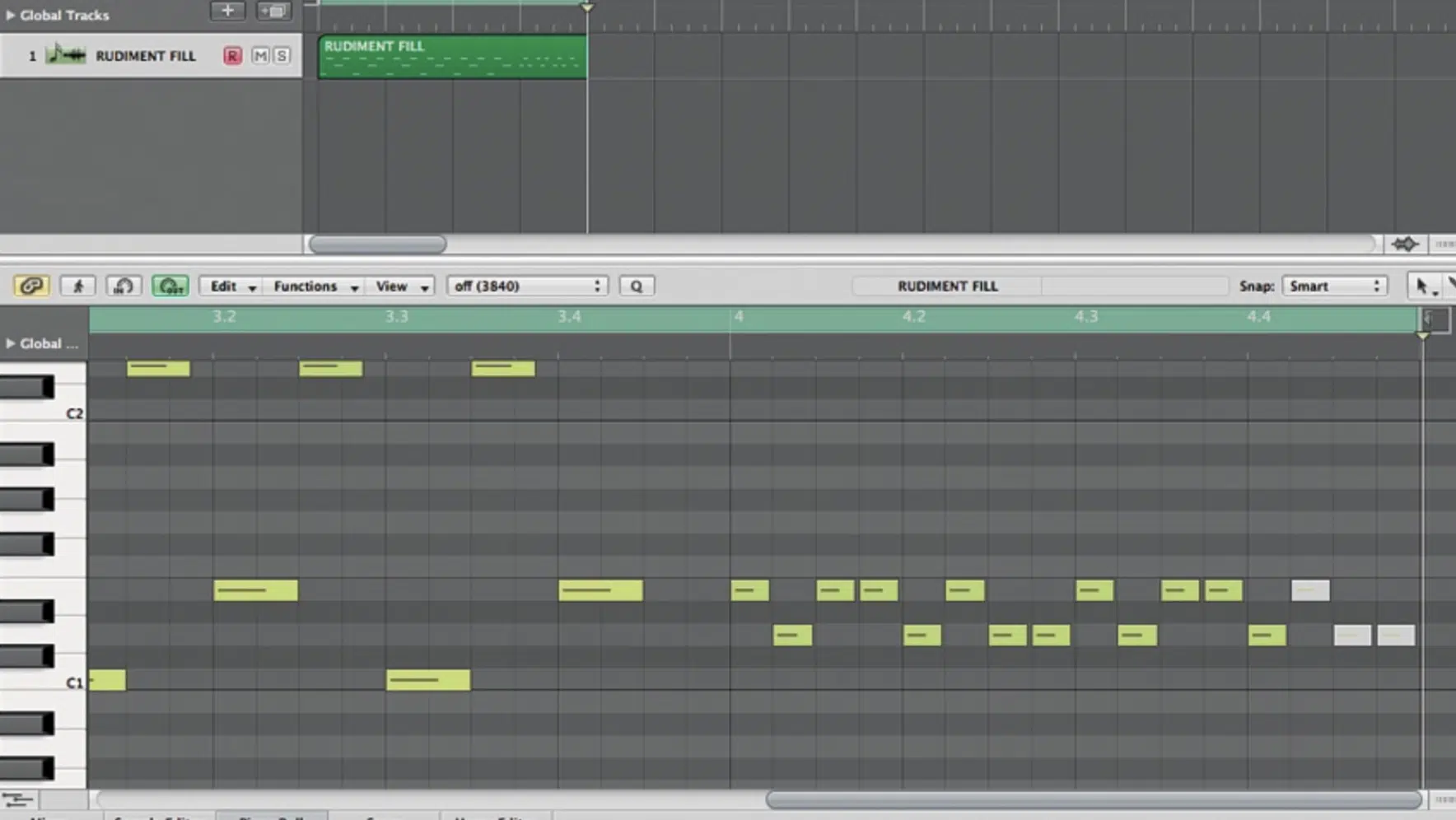
Here you can see a paradiddle, to get a better understanding.
One way to take your finger drumming to the next level is by applying classic drum rudiments to the pad controller.
A rudiment like the single stroke roll (alternating taps between hands) is great for building speed, control, and razor-sharp precision.
Start by practicing a simple kick on each quarter note, followed by alternating hi-hats and snare hits on the offbeats.
To make it more complex, use a double stroke roll to add fast hi-hat fills or rolls into your beats.
For example, when playing a hip-hop groove, a double stroke can help add quick snare rolls between kick hits 一 giving your beat more movement and intensity.
Drum rudiments like the paradiddle (right-left-right-right, left-right-left-left) can help introduce syncopation, creating more intricate, offbeat rhythms.
It’ll make your finger drumming sound professional and unique.
Pro Tip: Don’t limit rudiments to snare or hi-hat hits… Try applying them to your entire pad layout, including your kick drum and auxiliary percussion sounds.
This technique works super well in breakdowns or fills where you want to add some extra weight and drama.
A great finger drumming technique is to practice applying rudiments like flams (where two notes are played closely together) or paradiddles (shown above) across more pads than one for a more advanced and fuller-sounding rhythm.
4. Using MIDI Effects: Note Repeat, Velocity Curves, Etc.
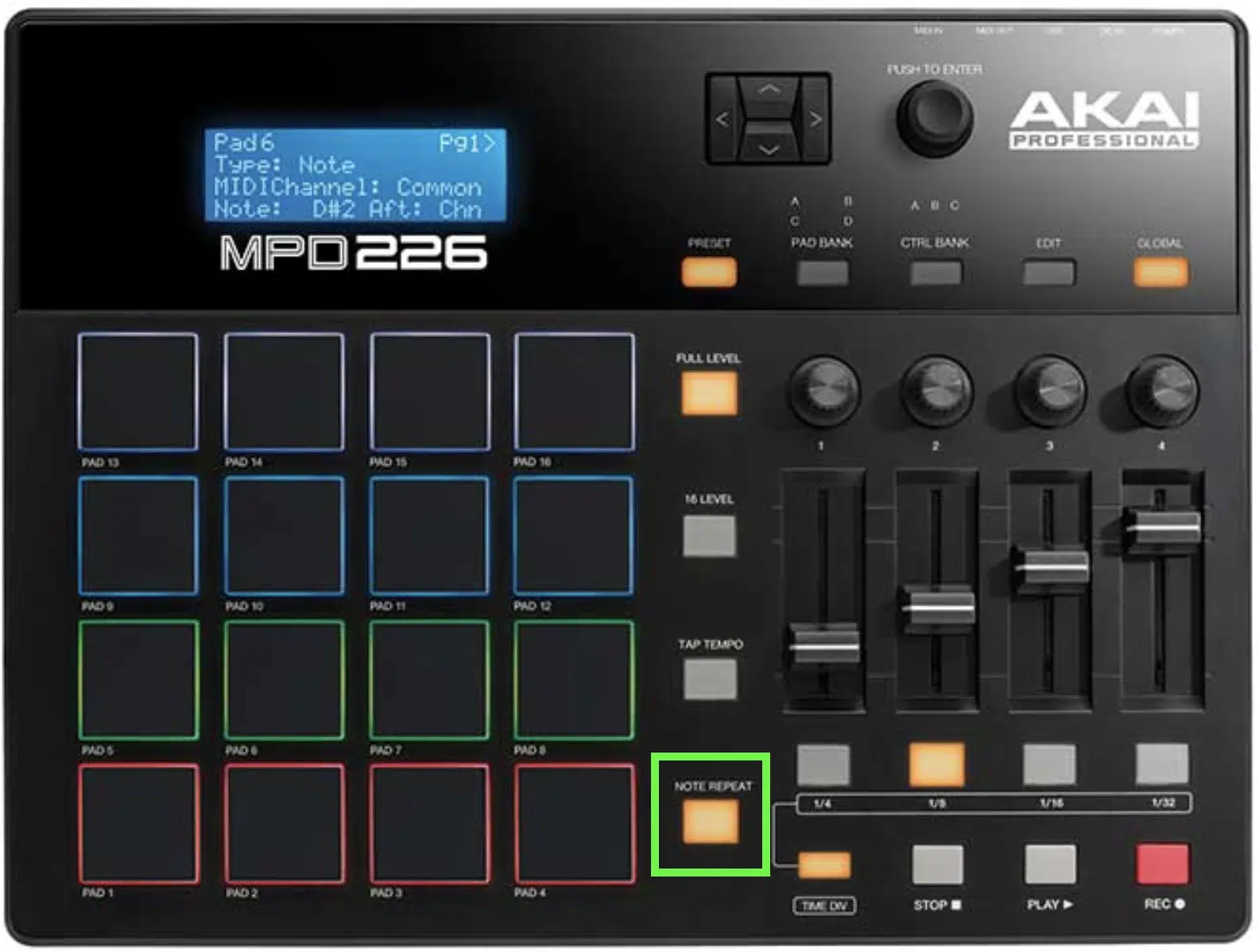
To truly expand your finger drumming capabilities, take advantage of all the MIDI effects available on your pad controller.
The Note Repeat feature is my favorite, often found on controllers like the Akai MPC.
It lets you automate fast rhythmic patterns like rapid hi-hat rolls or snare fills by holding a pad and adjusting the tempo/pace; super straightforward.
You simply program a set subdivision (like eighth notes or sixteenth notes) and get as creative as you want with your music, like real professional finger drummers.
What I like to do is switch up the subdivisions mid-performance.
For example, start with eighth notes for a steady rhythm, then switch to thirty-second notes for a rapid build-up during transitions.
This finger drumming technique is incredibly useful when working on fast-paced genres like hip-hop or trap, where you need precise, machine-like timing.
Velocity curves can also be adjusted to add more dynamics to your playing…
You can trigger softer sounds with light taps and punchy hits with stronger presses 一 bringing an extra layer of depth to your beats.
For example, you can create a subtle ghost note on the snare by lightly tapping the pad, then slam the kick with full force to punctuate the rhythm.
If you want a more organic feel like you really play drums all day.
Pro Tip: No one ever said Note Repeat was just for hi-hat rolls. You can apply it to other sounds like claps, percussion loops, etc.
You can also automate rapid-fire fills on less conventional elements like vocal chops or glitch effects, giving your beat an unexpected twist.
When adjusting velocity curves, you could also try setting different curves for different pads, like using a steeper curve on your kick for aggressive hits and a gentler curve on your hi-hats for more subtle, nuanced articulation.
5. Using Visual Cues: Color-Coding Pads for Better Performance
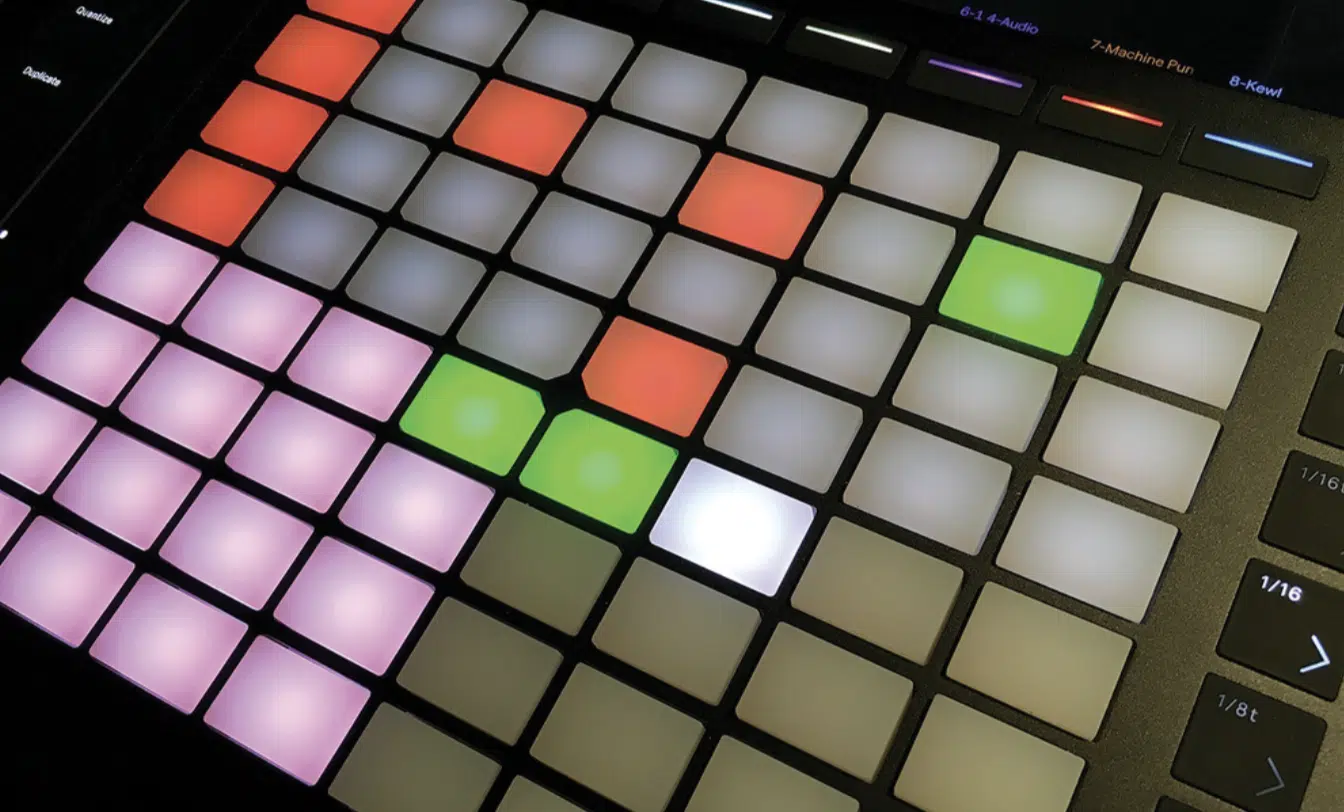
Using visual cues like color-coding your pads is overlooked by producers all the time… Don’t let that happen to you!
I know it sounds simple, but it makes a world of difference, trust me.
Most modern pad controllers, like the Ableton Push 2, allow you to assign colors to individual pads, making it easier to recognize where your key other sounds are located.
For example, you can color code:
- Your kick pad red
- Your snare pad blue
- Your hi-hat pad green
It doesn’t have to be those exact colors, whatever feels most natural to you, go for it because a visual roadmap will seriously speed up your performance.
This is especially helpful when performing live or when you’re layering multiple drum sounds quickly in a recording session.
6. Mastering Syncopation and Off-Beat Rhythms

Mastering syncopation and off-beat rhythms is a great way to give your finger drumming a unique feel and groove.
Syncopation involves playing notes that fall outside the regular beats 一 creating unexpected patterns that catch the listener’s attention.
For example, you can start by placing your kick drum on the first and third beats of a four-beat measure, then introduce the snare slightly off the second and fourth beats.
You can also add off-beat hi-hats to fill in the gaps and give your beat a more complex, rolling feel which people find super intriguing.
When combined with the rest of your drum patterns, syncopation can transform a basic rhythm into something much more engaging and energetic (perfect for hip-hop/EDM).
To make your syncopated rhythms even more advanced, try using velocity curves to control the dynamics of your off-beat notes as we talked about earlier.
Pro Tip: A great way to develop your syncopation skills is to shift your patterns by an eighth note or sixteenth note.
Try shifting just the snare or hi-hat hits off-beat while keeping the kick on the downbeat because the contrast between on-beat and off-beat elements will give your beat a signature groove.
7. Multi-Layered Drum Kits: Stacking Sounds for Killer Beats
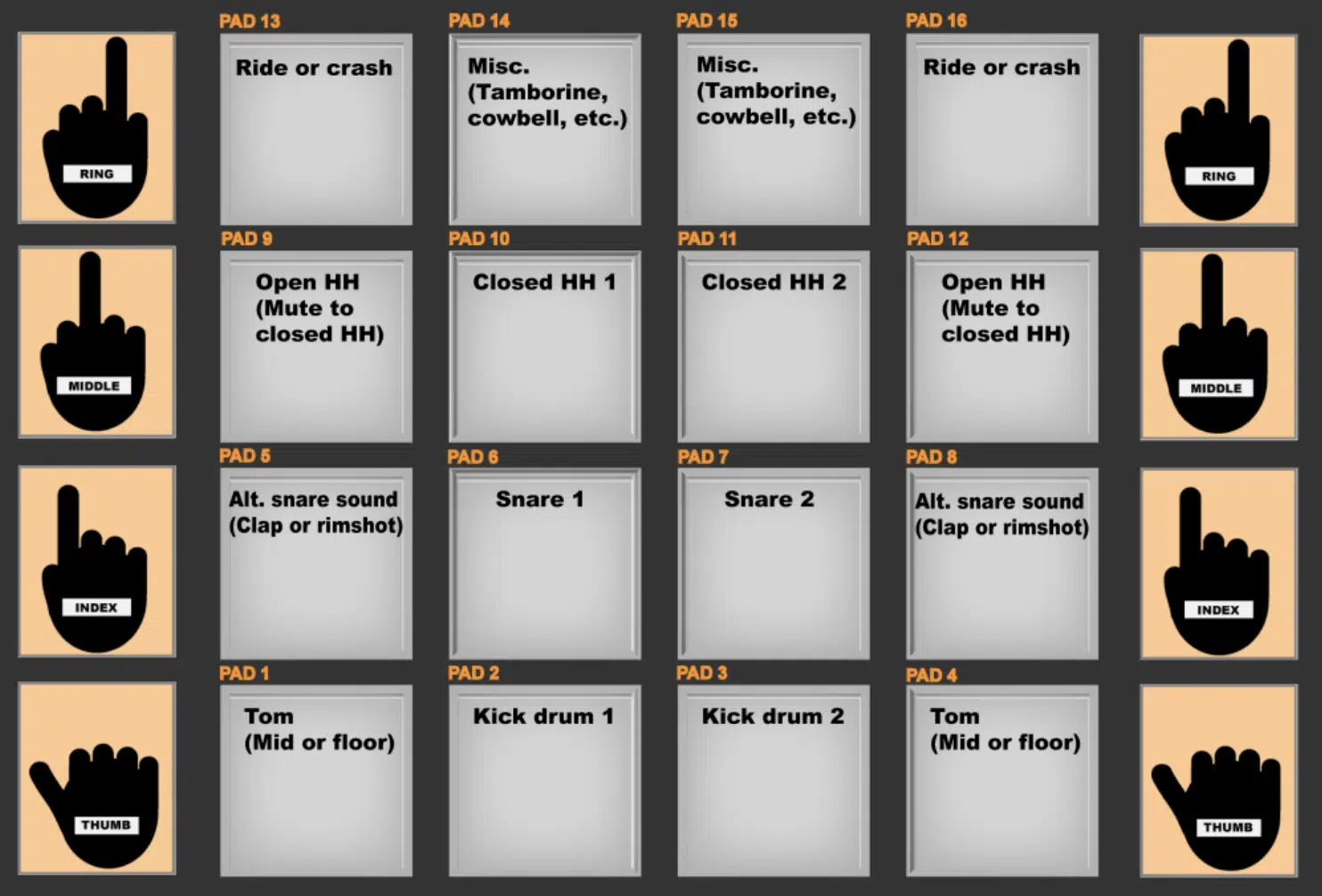
Using multi-layered drum kits can take your finger drumming to the next level by stacking multiple sounds on a single pad.
For example, layering a deep kick with a sub-bass hit can give your beat extra low-end punch, while stacking a sharp snare with a clap sound adds more texture to the rhythm.
This finger drumming technique is super effective when creating more dynamic hip-hop and trap beats where each drum hit needs to cut through the mix.
You can also layer percussion elements like shakers or rimshots with your hi-hats to add a more subtle rhythmic complexity.
The key to layering is making sure that each sound complements the others, so they don’t overpower or muddy the beats you’re creating.
Pro Tip
When stacking sounds, try tuning your layers slightly differently.
For instance, lowering the pitch of a layered kick can create more low-end rumble, while tuning a layered snare slightly higher adds brightness.
Also, vary the velocities of stacked sounds so that they don’t hit all at the same level.
Bonus: Practicing Finger Drumming
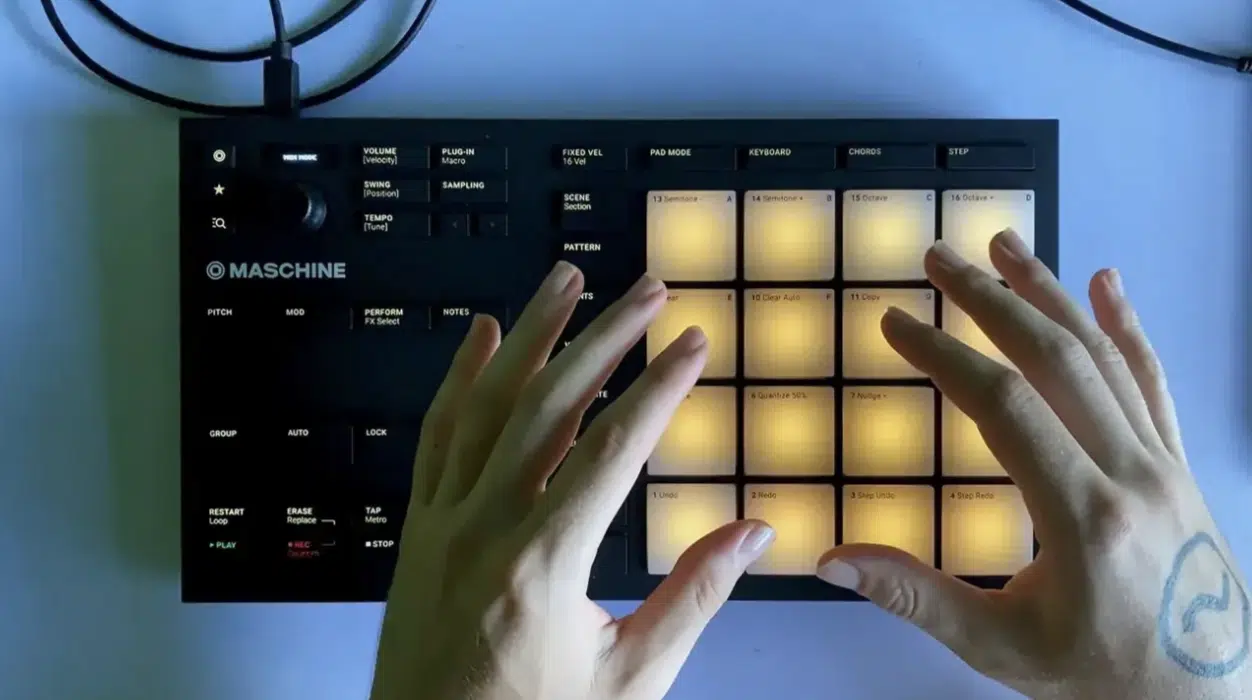
To develop your finger drumming skills, consistent and structured practice is key, so do not slack in this department.
Start by setting up a practice routine that includes both slow and fast patterns, using a metronome to keep time (there’s one built right in).
You can also find completely free lessons on platforms like Melodics, which offers guided finger drumming lessons that provide instant feedback on your timing/accuracy.
One of the best ways to practice finger drumming is to break down complex drum patterns into smaller sections, focusing on mastering each segment before moving on.
For example, practice alternating between kick and snare patterns with your right hand, while gradually introducing hi-hats with your left hand to build independence.
It’s all about building that muscle memory and coordination so it becomes second nature.
You can also record your sessions to analyze your progress and identify areas for improvement if you don’t want finger drumming lessons.
Finger Drumming: Final Thoughts
Finger drumming, as you now know, is a powerful technique that can transform the way you create beats.
It can add a human touch to your rhythms, enhance your timing and make your beats more dynamic, natural, and full of energy.
And by using all the tips, tricks, and techniques we talked about today, you’ll be well on your way to mastering finger drumming.
As a special bonus, you’ve got to check out these epic, highly-renowned Free Acoustic Drum Samples.
This pack contains 30 unique, punchy, acoustic drum samples 一 perfect for adding organic layers to your drums that complement your new finger drumming skills.
They’re a great way to bring more depth and energy to your tracks.
So, by practicing these methods, you’ll soon develop the skills and confidence needed to finger drum like a true professional.
Just make sure to keep honing your technique, stay creative, and let your drumming skills lead the way to better, more exciting beats.
Until next time…







Leave a Reply
You must belogged in to post a comment.